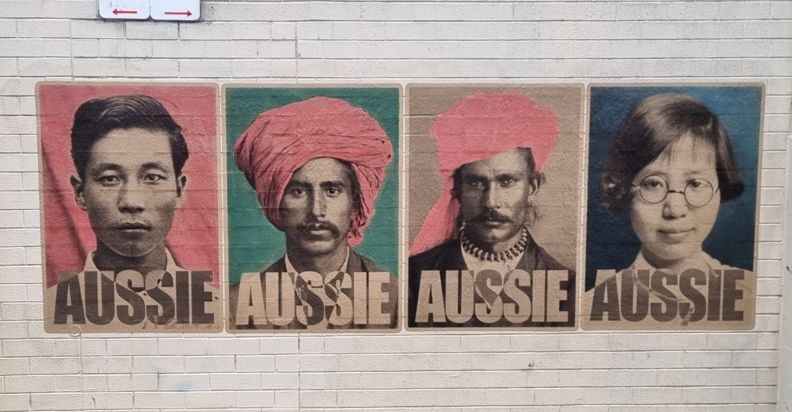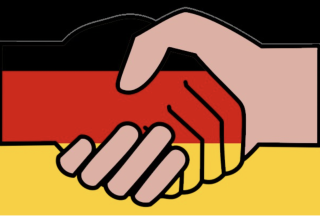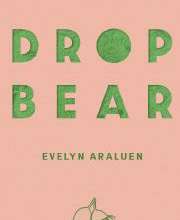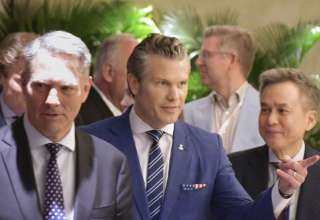by Pancho Lynch
The Spirit of Eureka Charter pays tribute to the 1st Nations People in recognition of their struggle since colonisation from 1788 till now. The charter also states….The Spirit of Eureka Committee will support causes that reflect and strive for:
- A genuine Multicultural Australia
- Opposition to discrimination in all forms including that based on racial background, class, beliefs, ethnicity, gender, ableness, sex and gender identity, and progressive political views.
- Extending a friendly welcome and support of refugees & asylum seekers fleeing war zones, oppression & environmental catastrophes due to climate change.
The Eureka flag embodies the Spirit of Multicultural Australia. Furthermore, the following information offers an analysis of how and why racism and prejudice can erode and divide society. In addition, acquiring knowledge can strengthen our struggle against its corrosive, negative effects on people. The contents describes prejudice, discrimination and stereotyping and how they are linked, their effects on us, and strategies for confronting and eliminating racism and uniting in harmony.
The Spirit of Eureka supports strengthening unity of culturally diverse Australian people against those who seek to be divisive. This unity of the many will enhance our nation’s future destiny.
Surveys show that public acceptance of Australia’s culturally, diverse population has been consistently high.In fact, 86% of Australians acknowledge that cultural diversity has been an improvement for our society. Australian society’s factual recognition of its cultural pluralism has been a way of compensating minority cultural groups for past exclusions, discrimination, and oppression. Many minority groups have experienced exclusion. In addition, they suffered denigration of their contributions and identities in the past.
Nowadays, multicultural Australia seeks to include the views and contributions of diverse citizens in society while maintaining respect for their differences. Furthermore, any future demands for their assimilation into a dominant, chauvinist culture would hopefully be opposed.
Multicultural Australia
Relevant results of 2021 Census
The Australian population has increased to 25.4 million and become more culturally diverse. This has strengthened society. Almost 50% of Australians have a parent born overseas.
Building Social Cohesion
Multicultural Australia is a success and needs vigilance to further enhance its development and protection. Evidence from a most recent Scanlon Foundation’s survey shows:
1 A larger measure of social cohesion inclusive at the neighbourhood level.
2 Civic integration: An estimated 80% of immigrants with more than 10 yrs of residence chose to become Australian citizens.
3 Multicultural education programs promote inclusion and community harmony, intercultural understanding & positive relationships between students whilst enhancing their academic attainment. This supports learners’ acquisition of knowledge, social skills & appropriate attitudes necessary to operate in a pluralistic, democratic society. Efficient cross-cultural communication skills also require interaction & negotiation between individuals from diverse backgrounds.
4 Economic participation skills.
Prejudice, discrimination and stereotyping
Prejudice:
Prejudice is a negative attitude towards a social group and by association an individual member of that group. This negativity applies both to the way of thinking and emotions. Prejudice (means: before knowing, we judge) is a judgement or attitude towards a group of people based on insufficient evidence, or incorrect information about a group of people that fails to take into account individual differences between the members and the group. It focuses on groups of people, and identifiable people within a group and is not directed towards an isolated person.
We are NOT born with prejudiced attitudes or stereotypes. We learn them from people surrounding us: E.g., Our parents, educators, mentors, workmates, friends, the media, and the myriad of social media we are exposed to each day.
Discrimination:
Discrimination occurs when we act on our prejudicial attitudes towards groups of people. It is also an action towards an individual who belongs to a particular group. If we have negative beliefs (stereotypes) and negative attitudes (prejudice) about a particular group (ethnicity) we may treat the target of prejudice poorly, such as harassing them or excluding them from ourselves and “our” networks.
Direct and Indirect discrimination
Discrimination can be direct or indirect.
Direct discrimination happens when a person is treated less favourably than another person in a similar situation because of his or her race, appearance, descent, national or ethnic origin or immigrant status.
Indirect discrimination can be less obvious. It can happen when employers or service providers put in place conditions, requirements and practices which actually disadvantage some people because of their race, appearance, descent, national or ethnic origin or immigrant status. If the requirement is not reasonable in regards to the circumstances of the case, it could be direct discrimination.
From: Australian Human Rights Commission/ Racial discrimination doc <humanrights.com.au>
Examples of systemic discrimination include
Reluctance to help: Defunding bridging courses in Australian English language acquisition and Australian lifestyles.
Reverse discrimination (also called positive discrimination): Such as creating prejudice in favour of a minority group – like having an employment policy to ensure equality & inclusion – such as 50% of SA police recruits must be available to females.
Tokenism: Deliberately giving trivial assistance to a minority group to be seen as inclusive or avoid accusations of prejudice & discrimination. For example: Employing 1 woman in a predominantly male organisation.
Stereotyping:
Stereotyping is having a fixed idea about a particular type of person, but it doesn’t consider individual differences between people.
- Stereotypes are learned and culturally transmitted generalisations about people that can stick in our minds
- Holding stereotypes of certain groups blocks us from thinking and feeling about their members in new and different ways, and stops us from seeing group members as unique, special human beings
- Stereotypical statements are generally more negative than positive or neutral
- Because stereotypes frequently have an element of truth in them, they are often used by prejudiced people, who point to some example of a stereotype to justify or rationalise their own prejudice
- An anti-semite points to ‘the fact’ that many Jews are merchants, lawyers, and business people as “evidence” that “all” Jews care about money
- People opposing women in important government positions may point to the fact that women cry more easily than men as “evidence” that women are too emotional and unstable to perform responsible jobs (sexist stereotype)
- Stereotypes are often used to discriminate against minority ethnicities unfairly
The effects of racism on perpetrators
- Maintains a low/insecure self-image
– limits personal growth
- Has a mental block to other ethnicities/ cultures
– limits global knowledge
– limits responses to “new” and “exotic” as negatives
– limits cognitive growth
- Rejects those from other cultural backgrounds
– limits personal relationships
– limits potentially rewarding experiences
- When displays violent, racist behaviour can be in conflict with the law
- Defence of indefensible position; causing confusion – unpleasant psychological state resulting in cognitive dissonance; defensiveness
The effects of prejudice / discrimination (on targeted victims / groups).
Victims of prejudice become traumatised due to verbal abuse, physical & psychological torment and social upheaval. The outcome of trauma can also lead to disadvantage and low self-esteem.
Social Stigma
Social stigma is a term used to explain the disapproval of, or discrimination against an individual based on a stereotype they may associate with.
Those belonging to the stigmatised group can face prejudice leading to depression and/or low self-esteem. Continual insults, denial of equality, exposure to violence and discrimination can threaten their social identity and psychological well-being.
They may start to become aware of not being treated equally (and are oppressed).
Research has shown that youth are aware of cultural stereotypes of diverse groups in society, and young members of stigmatised groups are aware of cultural stereotypes at an even younger age.
Internalised stigma refers to a process whereby a person knows or negatively feels messages or stereotypes they’ve heard about and therefore believe and identify with them themselves.
If a person is called a bludger for being employable, they might act out bludging as others expect of them.
If someone is directed to be assertive, and being intimidated because they appear to be compliant and emotive, they may then believe this is who they are, and continue to act this way.
Labelling or stereotyping can lead to a self-fulfilling prophecy. There is an argument to say that if labelled, stereotyped, harassed and discriminated along with members of their social group, they may eventually change their behaviour in keeping with the stigma they now associate with.
Changing attitudes to eliminate prejudice
EXPLICIT FORMS OF DISCRIMINATION ARE ILLEGAL & SOCIALLY CENSORED
Recently, many nations have been active re: education and legislation to reduce prejudice. E.g. Govt’s legislate to update old laws and to proactively establish laws that protect people’s rights & freedoms going forward. Education to change existing attitudes helps people form positive attitudes without the negativity of stereotypes, prejudice and discrimination.
There are however factors that contribute to sustained attitude change including the psychology of conformity, attitude formation, cognitive dissonance, persuasion, learning and stigma. Once prejudice is embedded in society it is difficult to change and/or remove.
EXPLICIT FORMS OF DISCRIMINATION
Australia has laws to prevent discrimination. The Federal Government has the following laws:
- The Age Discrimination Act 2004
- The Australian Human Rights Commission Act 1986
- The Disability Discrimination Act 1992
- The Racial Discrimination Act 1975
- The Sex Discrimination Act 1984
In addition, South Australia has the South Australian Equal Opportunity Act 1984
Despite these laws discrimination still occurs.
Australia’s previous ‘White Australia Policy’ and other related acts of parliamentary discrimination were violations against Australia’s First Nation’s People in the past.
Spirit of Eureka understands that eliminating prejudice has been a challenge, but believes we must always stand with our First Nation’s People and oppose racism.
We also realise that while just blaming ignorance is an aspect of the problem, dealing with subtle, and systemic racism are also factors to be challenged and fought against.
Education programs that are taught to young learners about proactive values such as tolerance, community, the consequences of prejudice and what discrimination looks like can mitigate prejudice from the start. All learner’s gain practical knowledge and awareness, understanding and empathy for collaborative skills by using programs such as “Harmony Day,” “Bullying No Way,” “Reconciliation Day” etc, through Australia’s education system.
Direct experience of another culture or lifestyle in another country or within our country is a step towards understanding and empathy for another culture. This may be by learning another language or about another culture and/or experiencing a cultural immersion exercise. Consequently, direct experience can create attitudes that are stronger to have greater accessibility and are more durable over time.
Research tells the watching of television programs or videos with gender diverse and Muslim or Arab communities content maybe reduces viewer’s prejudice a little. However, if viewers hold preconceived prejudices against gender diverse and/or ethnic minority groups they would need to watch particular programs till their instilled attitudes were changed for the better.
Further reading, Resources referenced & acknowledgements:
- Australian Human Rights Commission/ Racial discrimination doc <humanrights.com.au>
- https://www.abs.gov.au>find-census-data>quickstats>2021>AUS
- scanlonfoundation.org.au
- Multiculturalism and Australian Identity Vol 408 Issues in Society
ed: Justin Healey Pub: Spinney Press
- SACE Stage 2 Psychology Workbook
(speech to the Sydney Institute, 9 Mar 2016)
Conclusion: “Without equality and the ostracism of racist views, reconciliation is simply the institutionalisation and the victory of prejudice. When equality is guaranteed by properly enforced laws and human rights are protected and promoted, then personal reconciliation, as well as toleration and respect for varying views, is both proper and guaranteed for the future – Without that, it is a delusion and a diversion.”
Author: Brian Gormally, Director, CAJ 30 May 2019 Equality, Inquires and The Past.








